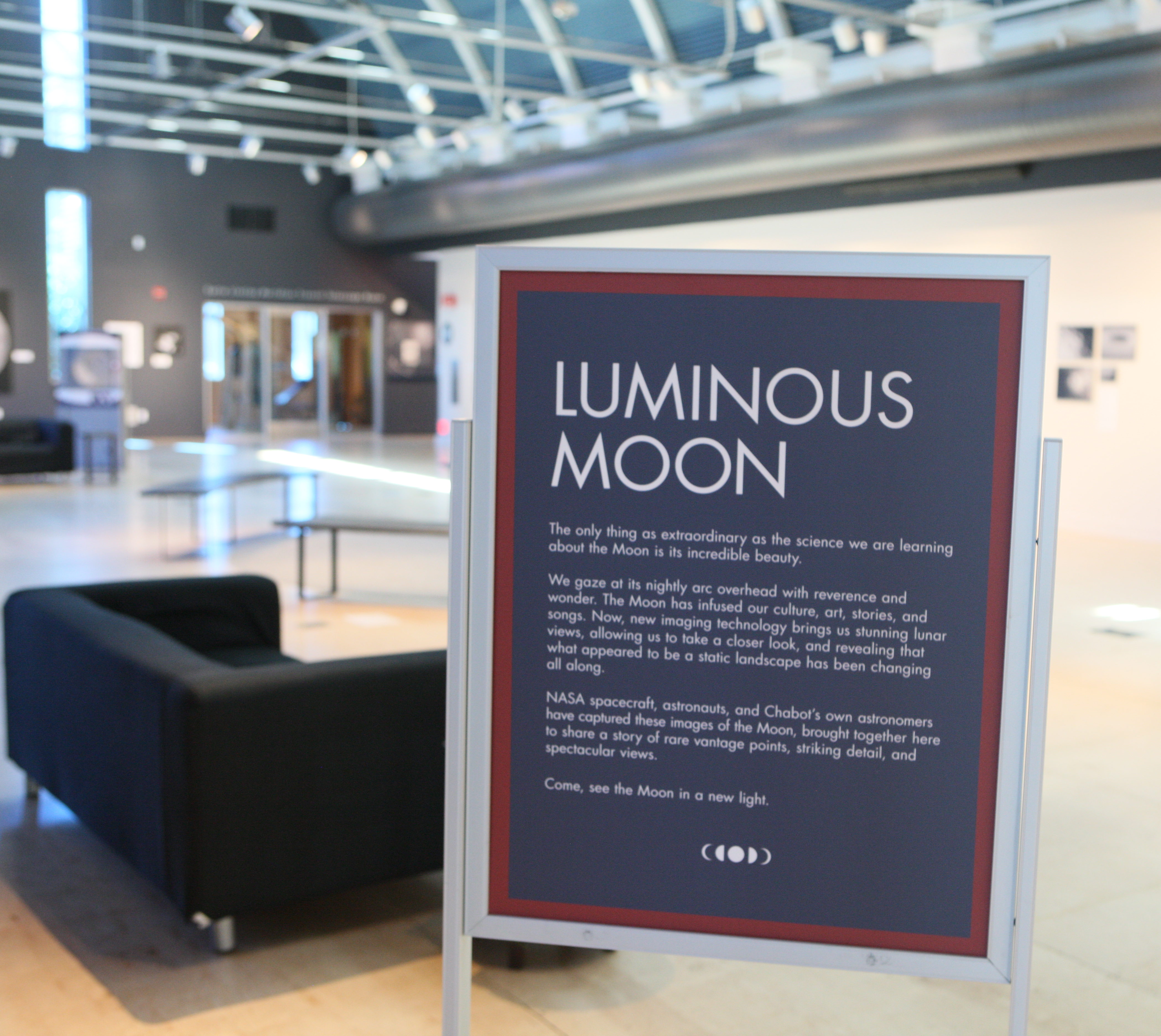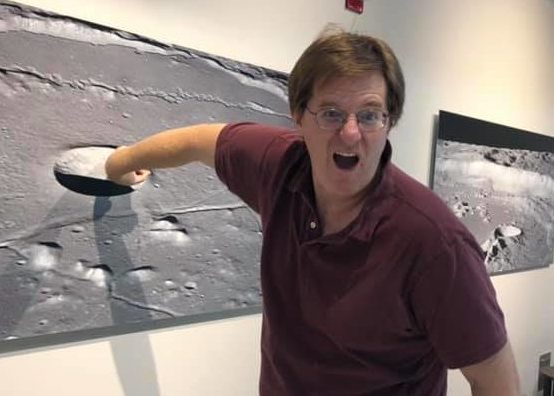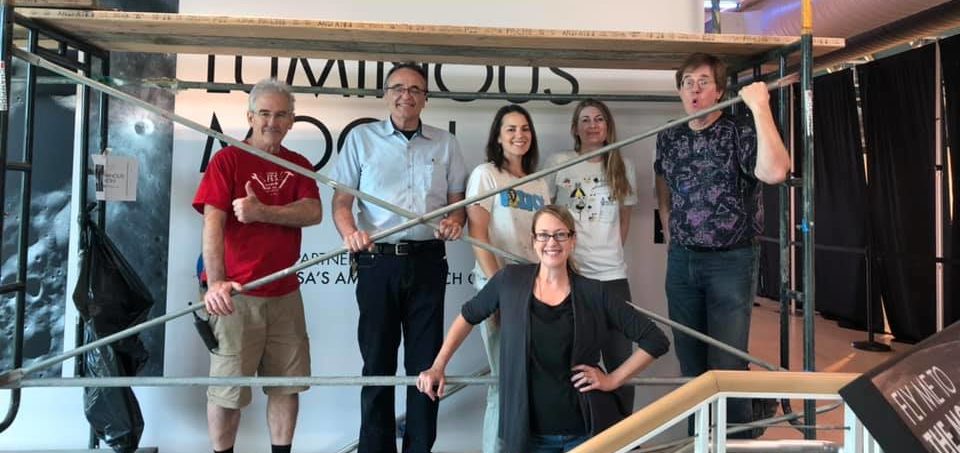Captioning the Moon

From the very beginning we knew we had a daunting task ahead of us. We wanted to tell you, our visitors, so much about the Moon – how lovely and ethereal it is, about its mythical and storied place in many cultures, its wild geographic history…and we couldn’t possibly leave out the astronauts, the lunar satellites and rovers… All this, written as concisely as possible.
We wrote and re-wrote every sign. We added words we loved, then took them out.
And then we did it again.
Working and Reworking

We re-worked the main exhibit sign at least 20 times, filled the margins with comments and suggestions about what should be included. We were so tempted to tell you, right when you walked in, that NASA’s Lunar Reconnaissance Orbiter (LRO), a satellite with an incredible set of scientific tools, was what brought you most of the images in the exhibit! We deleted it: it was too specific, too soon. You would have to wait …but what if you didn’t read the smaller sign that we ended up putting it on? You’d never know about the LRO! This would be tragic. (It would seem we stubbornly worked into this post, though, just to be safe…)
If we’re following best practices, while we’re writing and editing we also gather input from other Chabot departments, visitors, and external “unbiased” editors. Many different ideas come into play. It is like doing a puzzle, trying to fit the pieces/ideas in so that the big picture makes sense to whoever is looking at it. For Luminous Moon, we talked with scientists at NASA; researched how the Moon was being talked about in news articles, historic texts, and poetry; found out what questions kids asked most about the Moon; and drew on our Education Department staff’s expertise in working with students with many different learning styles.
The Edit-team

While trying to wrangle all of these disparate ideas, and keep our own in check, we employed a vital tool – we laughed at ourselves, constantly. This often happened after we would read a draft over and over, so many times that we could no longer truly see the words.
Our Astronomer and co-writer saved me from accidentally telling you all that craters were smashing into other craters on the Moon. (I had meant to say asteroids/meteorites were doing that.)
Thanks to him, now you don’t have to stand before the sign, trying desperately to make sense of how craters could zoom around like giant lunar bumper cars.
The long and short of it is: We conducted a rigorous and exciting exploration of everything we could find about the Moon. Along the way we discovered so many fascinating and surprising things that we feel like we see the Moon differently now. We enjoyed the process thoroughly, and did our best to use just the right words to share all of this with you.





